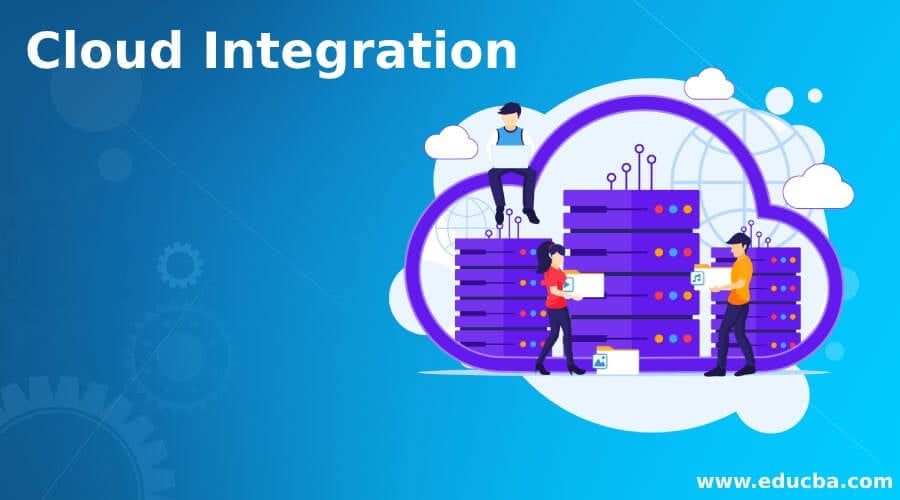Introduction of Cloud Integration
Cloud integration is the process of combining and deploying various cloud-based systems. It is also called an Integration Platform as a Service (iPaaS). The important work of cloud integration is to connect the separate elements of different clouds and local resources into a ubiquitous, single interface that lets administrators easily access and manage data, applications, and services. With cloud integration, admins can do each integration process manually and separately, which is time-consuming.
Features of iPaaS Software
Features of iPaaS solutions are given as follows.
- It has Pre-built connectors for applications like ERP, CRM, Marketing Automation, HCM, etc.
- It modifies pre-built connectors for unique environments
- It provides real-time and batch integration
- It can perform data deduplication, profiling, and cleansing.
- It also provides Security by password encryption, authentication, etc.
- It has easy to use Console for monitoring system health, resource utilization, etc.
iPaaS tools are essential for integrating data and managing communications within the IoT, which is growing nowadays.
There are various aspects from which users can match their requirements and choose the best cloud integration software. These aspects are categorized as follows.
- Admin Functions: This feature allows data transformation, connectors, and management of user communities and workflows.
- Run Time Capabilities: It includes parallel processing, real-time integration, data chunking, and proactive monitoring.
- Integration Tasks: It handles data virtualization, Big data processing, master data management, data life cycle management, and file transfer functions.
- Platform Functions: This set manages customization, testing, APIs, performance, reliability, global compatibility, and Security.
Top 5 Cloud Integration Platforms
Here is a list of various Cloud integration platforms
1. Dell Boomi
This software allows customers to build and deploy cloud-based integration processes called Atoms and transfer data between on-premises and cloud applications. Boomi stores all the systems and applications on a single platform by integrating all applications, data, processes, and developing applications. Users can also manage data quality, APIs, and B2B networks. Users can build workflows without coding knowledge.
Features of Dell Boomi
- The cloud integration platform provides easy to use graphical interface.
- It provides pre-built connectors to ease the difficult process of connecting data and applications across cloud platforms and legacy systems.
- Boomi has data integration, master data management, and data quality services (DQS) in a single environment.
- It combines data repositories from vendors like Salesforce, Netsuite, GoogleSheets, Oracle E-Business Suite, etc.
2. IBM App Connect
IBM App Connect is a widely used multi-tenant cloud integration that combines on-premises and cloud-based applications and systems applications. Using IBM App Connect, users can build APIs on a code-free, intuitive interface and create workflows that automate business processes. Users can also deploy IBM App Connect in other cloud and on-premises environments.
Features of IBM App Connect
- It provides Unlimited integration of servers
- It uses augmented intelligence to manage many integration styles, API, and microservices.
- It contains many secure pre-built connectors and reporting and data analysis abilities.
- IBM App Connect provides the best data handling management, Vertical scaling
- It has a Web Standards ODBC connectivity
3. Microsoft Azure Logic Apps
This software allows administrators to integrate applications across cloud services and on-premises systems. It provides OLAP services, data integration, information dashboards, reporting, data mining, etc.
Features of Microsoft Azure Logic Apps
- It allows Activity monitoring, Event tracking.
- It provides activity logs in detail.
- It has B2B integration.
- It has data masking and Process status alert functionality.
4. MuleSoft Anypoint Platform
This tool includes various tools for building, testing, and managing Application Programming Interfaces (APIs). It allows users to manage all integrations and APIs on a single platform. It lets users build and integrate their APIs, and they can also integrate with any other device, application, or data. Users can deploy on-premises integrations without rewriting code.
Features of MuleSoft Anypoint Platform
- It protects data and allows admins to access employees by authentication and encryption.
- It performs data profiling and data cleansing and removes redundant data.
- It is highly scalable as well as customizable.
5. Zapier
It can connect to over 1,000 web apps, such as Facebook, Google Drive, and QuickBooks, and share data. Zapier can automate every type of business process. Users can build and deploy workflows without coding knowledge.
Features of Zapier
- It provides data mining and ETL (Extract, Transform, Load) abilities.
- It is great for developing and deploying applications and handling systems migration.
- It is highly scalable and as well as supports an intelligent architecture.
Conclusion
In this article, we have seen what cloud integration software, various aspects of categorizing these tools, along with various cloud integration tools and there is. You can choose any software based on features and your requirements. We hope you will find this article helpful.
Recommended Articles
We hope that this EDUCBA information on “Cloud Integration” was beneficial to you. You can view EDUCBA’s recommended articles for more information.


